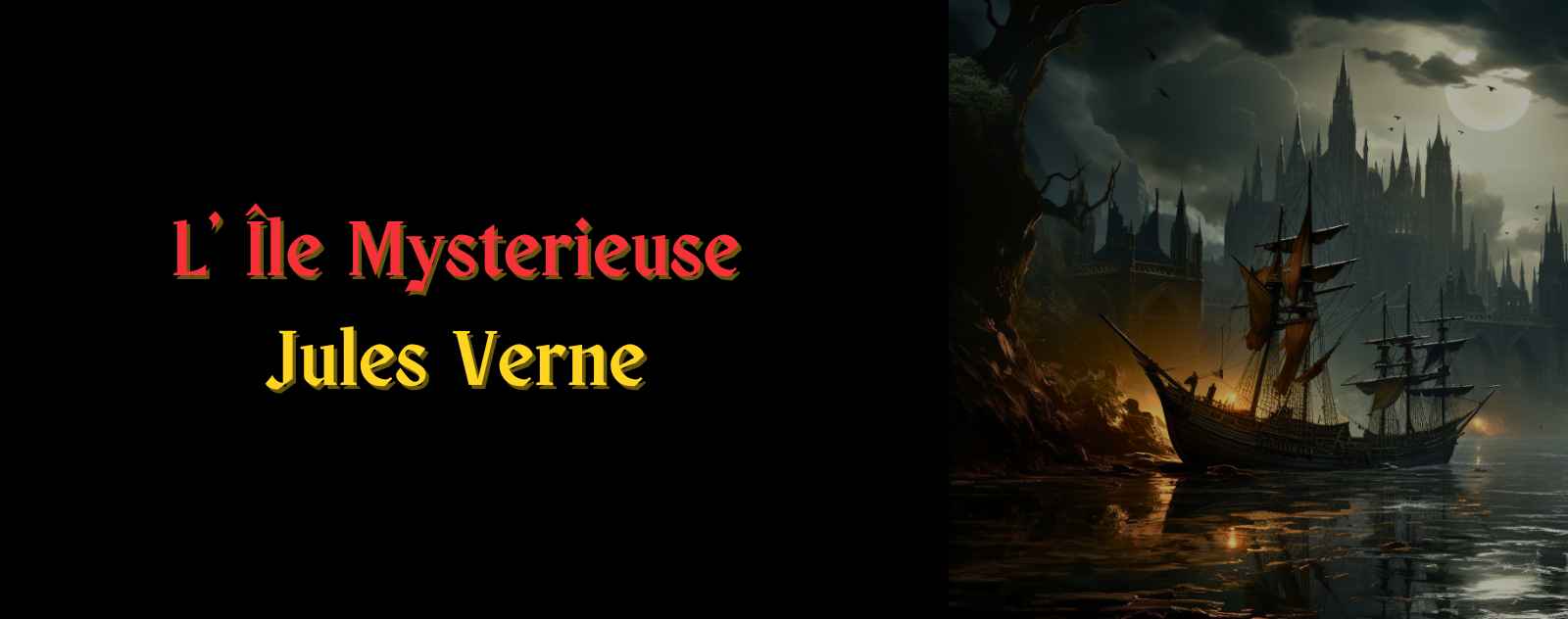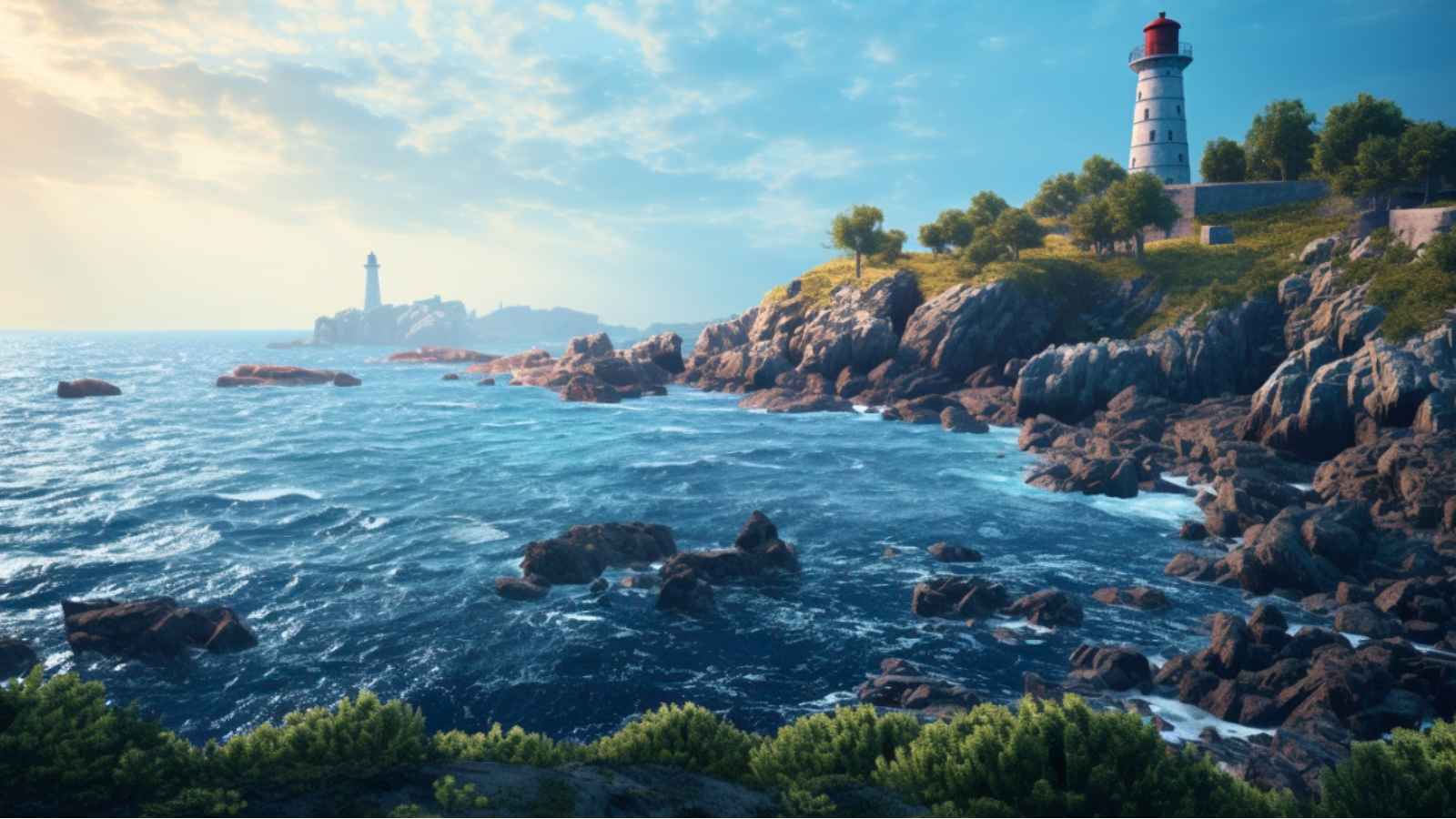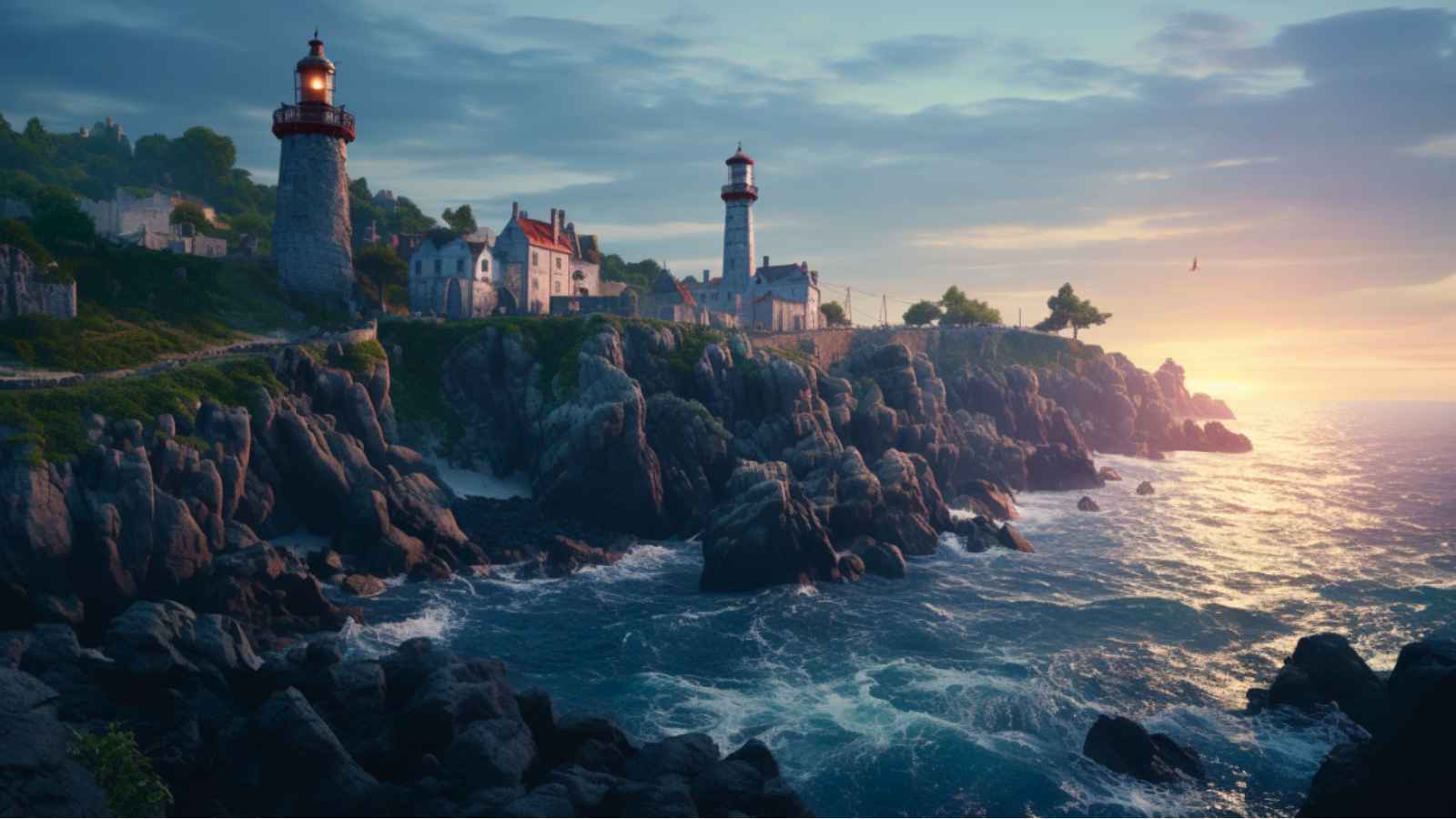
Have you ever pondered what it would be like to find yourself stranded on a deserted island, at the mercy of nature and your own survival instincts? If so, then Jules Verne's "The Mysterious Island" represents the quintessential literary laboratory for such existential speculation. This masterwork transcends the conventional castaway narrative, elevating it to a sophisticated discourse on human adaptability, scientific methodology, and the triumph of collaborative intellect over adversity.
As Michel Foucault brilliantly observed in his analysis of heterotopic spaces, certain places function as "counter-sites" where reality is simultaneously represented, contested, and inverted. Verne's mysterious island operates precisely as such a heterotopia—a space where the boundaries between civilization and wilderness, science and nature, order and chaos are continuously negotiated and redefined.
The Historical Context of The Mysterious Island
The historical milieu surrounding "The Mysterious Island" reveals fascinating layers of cultural and scientific significance that enrich our understanding of this extraordinary work. Published initially in 1874 by Jules Hetzel, this novel emerged during a particularly dynamic period in human history—the late 19th century—an epoch characterized by unprecedented scientific breakthroughs and technological innovations that profoundly influenced Verne's imaginative constructs.

The novel is deeply imbued with the reverberations of the American Civil War, lending the narrative profound political and social dimensions. The protagonist, engineer Cyrus Smith, emerges as a veteran of this transformative conflict, his character embodying the period's faith in technological progress and scientific rationality as instruments of human advancement.
Definition: The Mysterious Island
The Mysterious Island (L'Île mystérieuse in French) represents Verne's masterful synthesis of adventure literature and scientific speculation. This robinsonade—a literary work featuring characters stranded in remote locations—explores themes of survival, ingenuity, and the application of scientific knowledge in extreme circumstances. The novel serves as both entertainment and educational exposition on 19th-century scientific understanding.
The publication period coincides remarkably with burgeoning interest in natural sciences and natural history—themes abundantly explored throughout the novel. From geology to botany, meteorology to engineering, "The Mysterious Island" functions as a comprehensive compendium of contemporary scientific knowledge, presented through the lens of practical application and survival necessity.
The Principal Characters: A Symphony of Complementary Expertise
Verne's genius manifests most brilliantly in his construction of character archetypes that collectively embody the ideal of collaborative human achievement. Each protagonist represents a distinct sphere of knowledge and capability, their individual competencies forming a perfect symphony of survival expertise.
Cyrus Smith: The Engineering Virtuoso
Cyrus Smith emerges as the intellectual anchor of the group, a Civil War veteran whose engineering acumen transforms raw materials into sophisticated instruments of survival. His character embodies the 19th-century faith in scientific rationality and technological progress as primary drivers of human advancement.
Gideon Spilett: The Documentary Chronicler
Gideon Spilett, the journalist, serves as both observer and recorder of their extraordinary adventure. His professional curiosity and literary skills provide crucial perspective on unfolding events, transforming mere survival into documented human experience.
Bonadventure Pencroff: The Maritime Navigator
The sailor Bonadventure Pencroff represents indispensable maritime expertise, his knowledge of navigation and fishing proving essential for the group's survival. His character embodies the practical wisdom of seafaring tradition.

Herbert Brown: The Botanical Scholar
Herbert, the eager young naturalist, complements Smith's engineering prowess with his botanical knowledge and enthusiasm for natural sciences. His character represents the educational dimension of their adventures and the importance of scientific curiosity.
Nab: The Domestic Coordinator
Nab, Smith's faithful companion, provides essential domestic stability through his culinary skills and general maintenance capabilities. His character demonstrates that practical daily care forms the foundation upon which more spectacular achievements rest.
Captain Nemo: The Enigmatic Benefactor
The mysterious Captain Nemo makes his dramatic appearance later in the narrative. His submarine, the Nautilus, introduces elements of advanced technology and scientific speculation that elevate the novel into true science fiction territory.
Major Themes: Philosophical Underpinnings of Adventure
"The Mysterious Island" resonates with readers across generations not merely as adventure entertainment, but as sophisticated exploration of fundamental human concerns. The novel's thematic architecture reveals profound philosophical questions about humanity's relationship with nature, technology, and community.
Survival as Scientific Method
The theme of survival transcends basic subsistence to become a laboratory for applied scientific methodology. The characters consistently approach challenges through systematic observation, hypothesis formation, and experimental verification—transforming survival into scientific praxis.
Collaborative Intelligence
Friendship and cooperation emerge not as sentimental concepts but as practical necessities for intellectual and physical survival. The bonds formed between characters demonstrate that collective intelligence surpasses individual capability.

Science as Emancipatory Force
The role of science in understanding and mastering the natural world constitutes a recurring theme throughout Verne's œuvre. In "The Mysterious Island," Cyrus Smith particularly embodies science as both practical tool and philosophical framework for comprehending natural mysteries.
Adventure as Epistemological Quest
The spirit of adventure and discovery permeates every aspect of the narrative. Each character contributes to this epistemological quest for knowledge and new experiences, whether through island exploration or revelation of its secrets.
Human Agency in Natural Environments
The relationship between humanity and nature emerges as a central philosophical concern. The island itself functions almost as a character, possessing its own mysteries and dangers. The novel explores how humans interact with their environment, simultaneously modifying and being modified by the nature surrounding them.
Cinematic Adaptations: Visual Interpretations of Literary Genius
The enduring appeal of "The Mysterious Island" extends far beyond literary boundaries, inspiring numerous cinematic interpretations that attempt to capture the visual splendor and intellectual excitement of Verne's narrative imagination.

"The Mysterious Island" (1929)
This silent film adaptation represents one of the earliest attempts to translate Verne's literary vision into cinematic language. Despite technological limitations, it succeeded in capturing the essential spirit of adventure and discovery that permeates the original novel.
"Mysterious Island" (1961)
This Technicolor adaptation remains perhaps the most celebrated cinematic interpretation. Utilizing cutting-edge special effects of its era, the film brought the island's mysteries to vivid life, creating visual spectacle that complemented Verne's imaginative narrative.
"The Mysterious Island" Television Series (1973)
This French television production offered extended narrative space for deeper character development and thematic exploration, allowing more comprehensive treatment of Verne's complex themes and relationships.
Animated "The Mysterious Island" (1995)
Adapted for younger audiences, this animated version successfully distilled the essential adventure and discovery elements while maintaining accessibility for children, introducing new generations to Verne's imaginative world.
"The Mysterious Island" (2005)
This modern adaptation employed advanced special effects technology to reimagine the novel for 21st-century audiences, integrating contemporary science fiction elements while preserving the core narrative structure.

The Enduring Legacy of Scientific Optimism
"The Mysterious Island" transcends conventional adventure literature to become a sophisticated meditation on human nature, scientific methodology, and collaborative achievement. This masterpiece by Jules Verne addresses universal themes while immersing readers in a modern robinsonade that celebrates human ingenuity and the transformative power of applied knowledge.
As Bruno Latour observed in his analysis of scientific networks, innovation emerges not from isolated genius but from complex interactions between human actors and material circumstances. Verne's castaways—particularly engineer Cyrus Smith and journalist Gideon Spilett—exemplify this principle, demonstrating how collaborative intelligence and systematic methodology can transform seemingly impossible circumstances into opportunities for advancement.
Are you prepared to follow these remarkable survivors in their adventures on Lincoln Island? This novel, rich in scientific illustration and diverse character competencies, invites readers to an unforgettable intellectual adventure. Embark for the mysterious island and discover its secrets for yourself!
Frequently Asked Questions

What is Jules Verne's primary contribution to science fiction literature?
Jules Verne is widely recognized as one of the founding fathers of science fiction. He pioneered the integration of scientific and technological elements into adventure narratives, establishing precedents for countless writers in the genre and creating the template for scientifically informed speculative fiction.
Is "The Mysterious Island" based on a true story?
No, "The Mysterious Island" is a work of fiction. However, Verne drew extensively from contemporary scientific knowledge and theories to construct his narrative, creating a plausible framework for his speculative elements.
Are there sequels or prequels to "The Mysterious Island"?
While "The Mysterious Island" stands as an independent work, it forms part of Verne's "Extraordinary Voyages" series—a collection of novels exploring scientific and geographical themes through adventure narratives.
What is considered the best film adaptation of "The Mysterious Island"?
This remains subjective, but the 1961 cinematic adaptation is frequently cited as most faithful to the spirit and plot of Verne's original novel, successfully balancing visual spectacle with narrative integrity.
Where can I purchase a copy of "The Mysterious Island"?
You can find "The Mysterious Island" in most bookstores, both online and physical retail locations. The novel is also available in multiple electronic formats for digital reading, ensuring accessibility across various platforms and preferences.
Sources and References
- Verne, Jules. "The Mysterious Island." Original French edition: "L'Île mystérieuse" (1874)
- Foucault, Michel. "Of Other Spaces: Utopias and Heterotopias" (1967)
- Latour, Bruno. "Science in Action: How to Follow Scientists and Engineers through Society" (1987)
- Historical documentation of 19th-century scientific advancement
- Analysis of survival literature and robinsonade tradition
- Studies in adventure literature and scientific fiction
Eugénie Vaporette
Curator-Consultant in Steampunk Aesthetics
Graduate in Victorian Technology History










